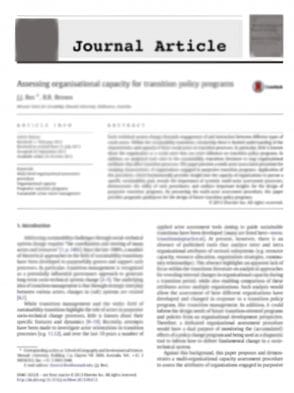Incorporation and application of resilience in the context of water-sensitive urban design: linking European and Australian perspectives
Abstract
The water sensitive city is a term within urban water management in which the concept of resilience to extreme climatic events and climate change plays a key role and represents the interaction between different branches of water science, engineering, and other domains such as urban planning and design. In this context, resilience is the ability of a system to cope with or recover from inter alia floods and droughts and also to retain original identity in some form in the face of long-term change. It is generally accepted that sustainable systems with respect to water management are mainly dominated by their resilience, which is intrinsic to water sensitive cities, and includes social, economic, and environmental as well as technical systems, such as built infrastructure and environments, and their interactions. Therefore, each system cannot be considered in isolation but needs to be seen as a part of wider aspects of water and urban services and utilities in resilient cities. New urban development can be better provided with flood and drought resilience because of the opportunity for the implementation of the available technical, social, and economic knowledge. This is different in the case of existing urban areas where maximization of the value and use of water requires more and in-depth analysis. The growing movement for water-sensitive urban design (WSUD), a concept developed in Australia, provides inspiration for maximizing the value and use of water in urban areas, with an increasing consideration of flood and drought resilience. Synergistic integration between the extant knowledge on WSUD together with resilience approaches can lead to the establishment of a new model for water sensitive cities which are also flood resilient. Similarly, dealing with urban flooding in a wise manner can simultaneously optimize the use of all kinds of available resources—also enhancing resilience for droughts.
